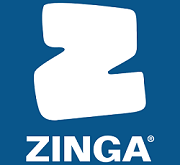APPLICATION
Once thoroughly mixed, ZINGA® can be applied by using a normal paintbrush, a short-fibre roller (not for the first coat), a conventional airless spray-gun Electrostatic Spray. When applying ZINGA®, it must only be thinned with Zingasolv, which is available from your nearest distributor. Please read the appropriate Data Sheet.
ZINGA® can be applied in a wide variety of weather conditions. The application surface temperature range is from -15°C to +40°C, with a maximum humidity of 95% so long as the steel temperature is 3°C above dew point. Like all coatings the substrate surface should be free from all types of contamination.
The broad range of allowable application conditions that ZINGA® affords means that very few days are lost during projects due to poor weather i.e. the maintenance window is extended. This, combined with ZINGA®‘s unlimited shelf life, ensures minimal wastage of either time or materials during a project.
SURFACE PREPARATION
Surface preparation is key to a good performance of any coating. Any form of contamination on the surface will create areas where the ZINGA is not in direct contact with the steel, disrupting its electrochemical connection, the electron flow and hence the cathodic protection. Therefore, the surface should be cleaned to be free from:
Dirt
Oils and greases
Salts
Mill scale
There are three ways to remove the contaminations from the surface:
Solvent cleaning
Detergent cleaning
Steam cleaning
Solvent cleaning is only recommended for small, non critical applications, Zingasolv can be used. Detergent cleaning is preferred over solvent cleaning; but steam cleaning at 80°C is most preferred to create a clean surface for ZINGA application.
ZINGA VARIOUS APPLICATION METHODS
Once thoroughly mixed, ZINGA can be applied by using a normal paintbrush, a short-fibre roller, (not for the first coat) conventional or airless spray Electrostatic spray .
ZINGA must be thoroughly mechanically stirred to achieve a homogeneous liquid before application. After a maximum of 20 minutes, re-mixing is necessary.
ZINGA ON (OLD) HOT DIP AND ZINGA RELOADING
When applying ZINGA on a Zinc surface, ZINGA has to come in contact with pure metallic Zinc to ensure a good electrochemical connection and hence a cathodic protection of the substrate.
If a Zinc rich substrate is subject to the environment, it will form Zinc salts (zinc oxides, zinc carbonates and others) which form a barrier.
This zinc salt barrier has to be removed before applying ZINGA.
For more information, please contact the Zingametall Technical Team.
OVERCOATING ZINGA WITH TOP COAT FINISHES
ZINGA can be overcoated with a topcoat to give a coloured finish to the structures. Like all porous Zinc rich coatings, care should be taken to ensure compatibility of the topcoat with ZINGA.
Generally speaking, ZINGA can be topcoated with acrylic two packs, powder coating, or with other Zinga finishes.
Under practical conditions, we advise the use of a sealer to avoid any problems with the compatibility of the topcoat. Zingametall offers two compatible sealers which have been tested according to ISO 12944: Zingalufer (PU sealer) and Zingaceram HS (EP sealer).
It is not possible to give an extensive list of products which are or are not compatible with ZINGA. Every topcoat has its specific characteristics which make compatibility on ZINGA more or less likely.
We can only give general guidelines to detect whether or not it is likely that a topcoat is suitable for use on ZINGA or not.





